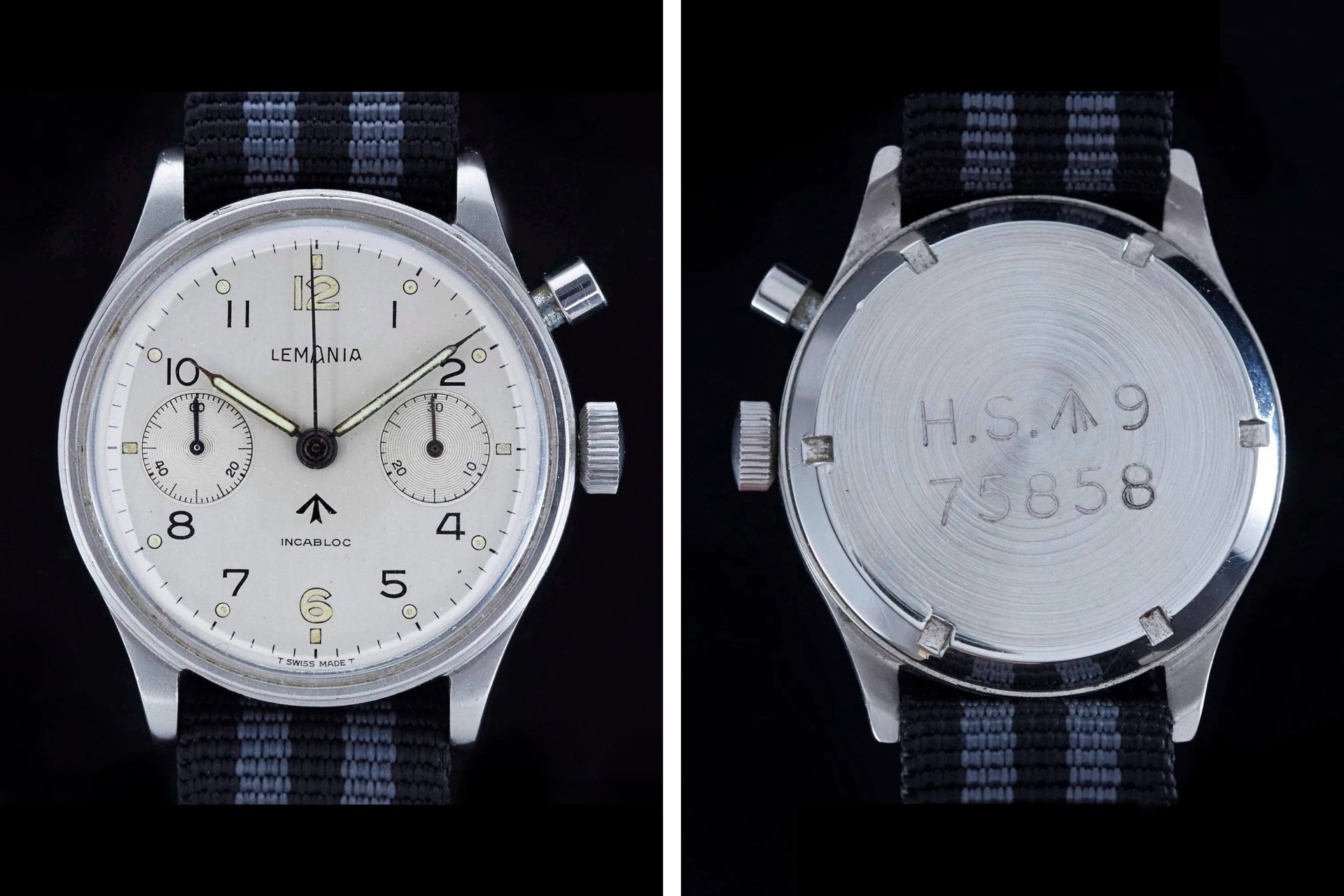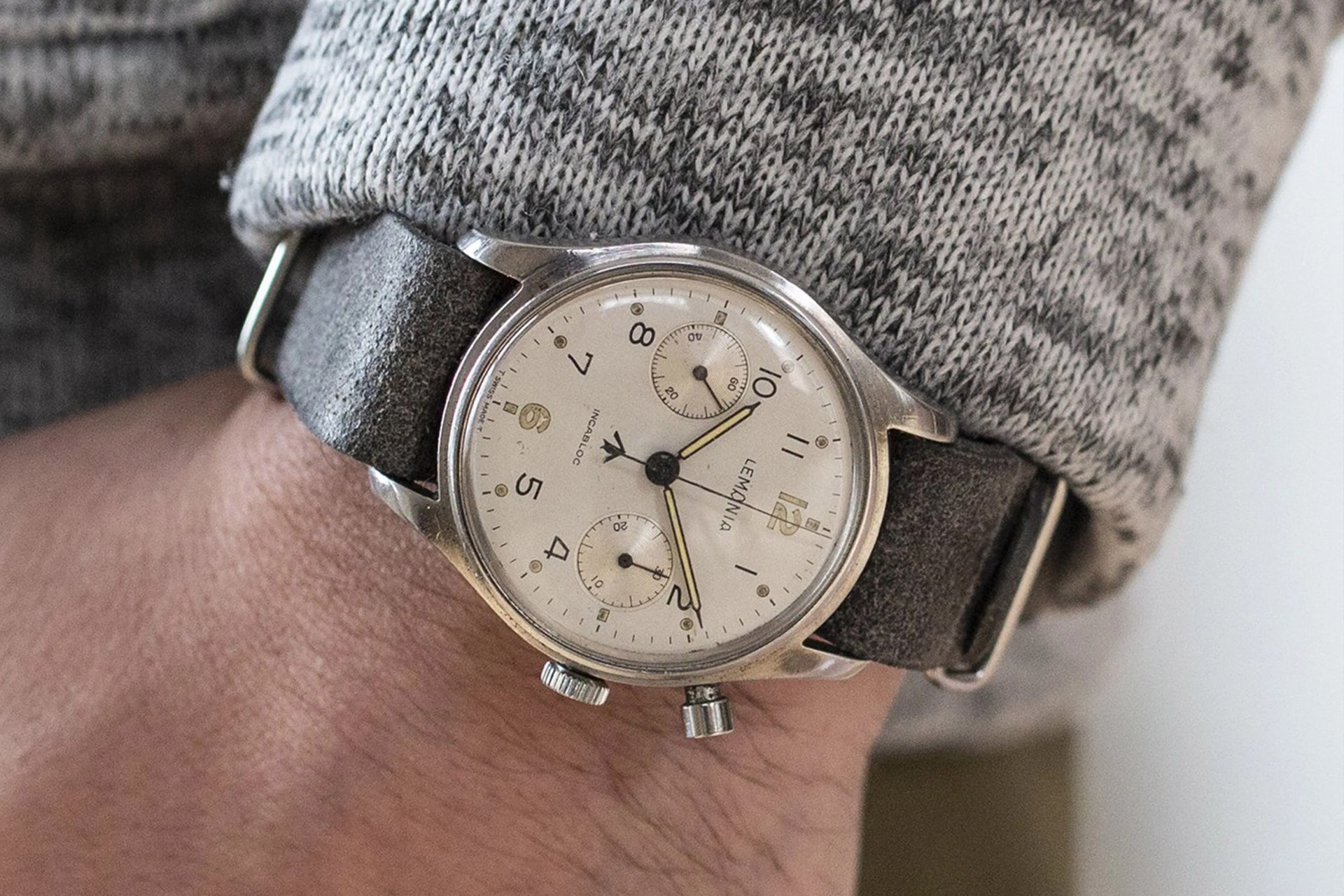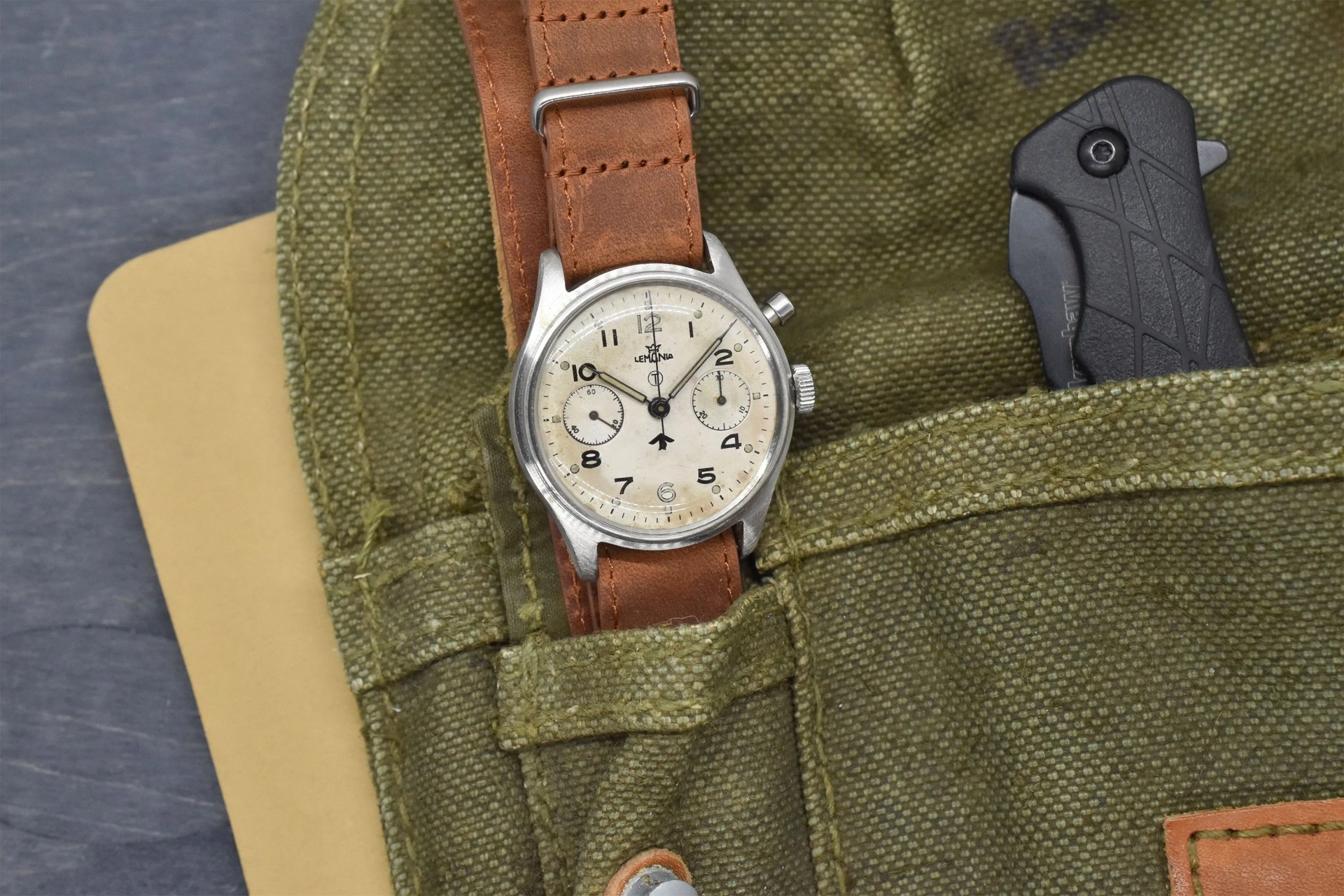Welcome to Watches You Should Know, a biweekly column highlighting important or little-known watches with interesting backstories and unexpected influence. This week: military monopusher chronographs.
Soldiers’ issued gear regularly included a watch for much of the 20th century, and it was often as basic and utilitarian as possible. Chronographs, on the other hand, are complicated — but sometimes their integrated stopwatch functionality is what the military called for. With a simple, usually white dial and only a single pusher, one of the earliest such watches made specifically for military use was a bit different than what you might expect of a military chronograph: today, it’s often known to collectors nondescriptly as a “military monopusher chronograph.”
They were intended purely as tools, and could mostly be found on the wrists of air force and navy personnel of a couple countries over several decades. Though there were variations of this type of watch and it was produced by different companies, the basic design was that of a 38.5mm case with a spare, white dial and chronograph functions controlled only by a single pusher.
 Analog / Shift
Analog / ShiftThe monopusher chronograph predates Breitling’s invention of the now common two-pusher system, and is generally a simpler solution that lacks some of the functionality two pushers offer: Whereas a more conventional two-button chronograph has one button for stop and start and a second for rest, a monopusher features just one button for start, stop and reset. By the time these monopusher chronographs were purchased for the military, the two-button system is already well established — if not as ubiquitous as today — with examples being produced for military use.
So, it begs the question: why did militaries consistently contract these exact specifications when a more “modern” solution was also available? It may have been that the extra mechanical complexity and vulnerability of one more hole in the case weren’t deemed worthwhile — or it may be that two-button chronographs were significantly more expensive — but we don’t know the exact answer. What we do know is that such examples appeared as early as the 1930s and that they were ordered and produced into the 1970s.
 Hodinkee Shop
Hodinkee Shop
